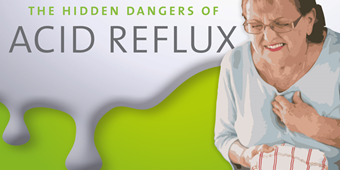Hemorrhoids: A Guide To Putting the Discomfort Behind You

Answer a few questions and we'll provide you with a list of primary care providers that best fit your needs.
If you ever discover the discomfort – or pain – of hemorrhoids you’re far from alone.
One of the most common of human ailments – affecting millions of Americans at any given time – hemorrhoids are swollen, inflamed veins around your anus or in your lower rectum, the bottom section of your colon, or large intestine.
Hemorrhoids affect about 1 in 20 Americans, common in women and men. About half of adults older than age 50 will suffer from hemorrhoids.
They form externally, under the skin around the anus, or internally, in the lining of the anus and lower rectum. In many cases, home remedies heal them.
Hemorrhoid Symptoms
External hemorrhoid symptoms may include:
- Anal itching
- Anal ache or pain, especially when you sit
- One or more hard, tender lumps that form near your anus
External hemorrhoid symptoms often go away in a few days. But you can worsen the symptoms with excessive straining, rubbing, or cleaning around your anus.
Internal hemorrhoid symptoms may include:
- Bleeding from your rectum, indicated by bright red blood on the stool, on toilet paper, or in the toilet bowl after a bowel movement
- A hemorrhoid that falls through your anal opening – a condition called prolapse. Prolapsed hemorrhoids may cause pain and discomfort, while those that don’t prolapse usually do not hurt.
Common Hemorrhoid Causes
Your risk of hemorrhoids increases if you:
- Strain during bowel movements or sit on the toilet for long periods of time
- Have chronic constipation or diarrhea
- Eat low-fiber foods
- Are older than age 50
- Are pregnant
- Often lift heavy objects
- Overuse laxatives or enemas
How Hemorrhoids Are Diagnosed
In diagnosing hemorrhoids your doctor will talk with you about your health history and will conduct a physical exam, checking your rectum with a gloved finger.
However, if your doctor’s initial exam does not show a clear cause of your rectal bleeding, she may use:
- A lighted scope (sigmoidoscope) to look at the lower third of your colon, or
- A colonoscope to look at the entire colon
These tests can help determine if the bleeding it caused by a more serious problem, such as Crohn's disease, ulcerative colitis, or cancer of the colon or rectum.
How Hemorrhoids Are Treated
 Most external hemorrhoids can be treated with home treatments, such as:
Most external hemorrhoids can be treated with home treatments, such as:
- Adding fiber to your diet, including fruits, vegetables, and whole grains
- Drinking more water
- Over-the-counter hemorrhoid ointments or suppositories — a medicine you insert into your rectum
- Stool softeners
- Avoiding straining during bowel movements or sitting on the toilet for long periods
- Over-the-counter pain relievers such as acetaminophen, ibuprofen, naproxen, or aspirin
- Sitting in a tub of warm water – a sitz bath – several times a day
Home treatments can also be used for most internal hemorrhoids. But severe internal hemorrhoids may require other treatments.
You should call your doctor if you:
- Still have symptoms after one week of at-home treatment, or
- Have bleeding from your rectum
When home treatments don’t heal internal hemorrhoids, your doctor may recommend one of the following treatments performed by a physician:
- Rubber band ligation. This involves placing a special rubber band around the base of a bleeding or prolapsing hemorrhoid. This cuts off the blood supply, causing the hemorrhoid to shrivel and fall off.
- Sclerotherapy. A solution is injected into the hemorrhoid causing scar tissue to form, cutting off the blood supply, often shrinking the hemorrhoid.
- Infrared photocoagulation. The heat of infrared light directed at the hemorrhoid causes scar tissue to form. This cuts off the blood supply, often shrinking the hemorrhoid.
- Electrocoagulation. An electric current is directed into an internal hemorrhoid to form scar tissue, cutting off the blood supply, often shrinking the hemorrhoid.
In some cases, surgery is needed:
- Hemorrhoidectomy. This procedure, performed under anesthesia, removes large external hemorrhoids and prolapsed internal hemorrhoids that do not respond to other treatments.
- Hemorrhoid stapling. A special stapling tool is used to remove internal hemorrhoid tissue and pull a prolapsed internal hemorrhoid back into the anus. This procedure is performed under anesthesia.
Answer a few questions and we'll provide you with a list of primary care providers that best fit your needs.
Source: National Institute of Diabetes and Digestive and Kidney Diseases; Hemorrhoids, Healthwise, August 11, 2019; American Society of Colon and Rectal Surgeons




